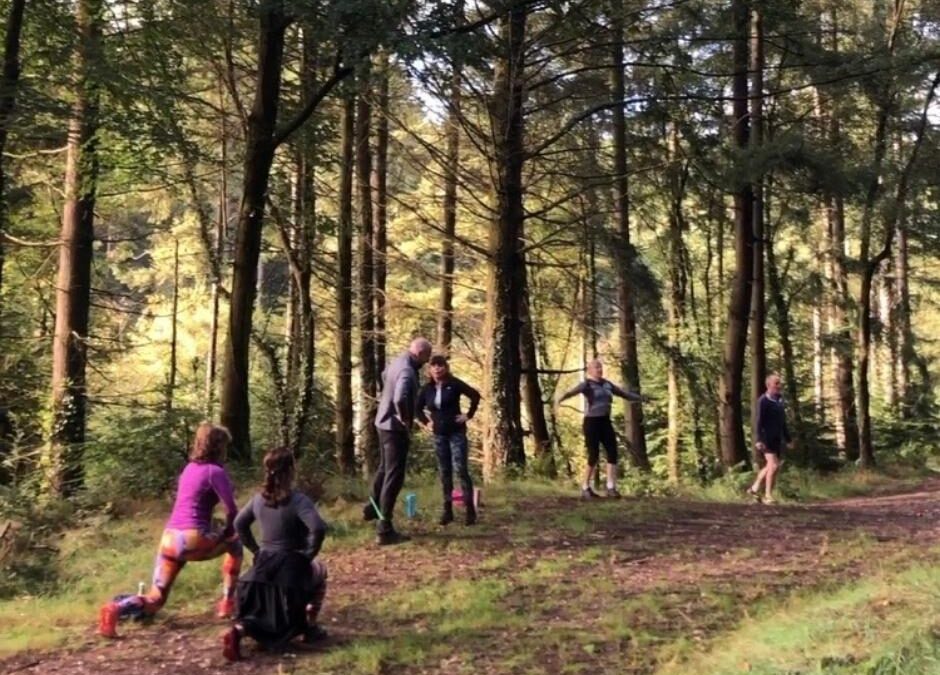Hot flushes are probably the number 1 symptom that people think of in relation to the menopause. There are countless reported ways to help combat them, although many have not been scientifically tested. Can exercise and nature ease hot flushes so they are less frequent and less intense? In this blog post, I share what the science has to say.
A brief definition of menopause
After years of being brushed under the carpet, the menopause is finally out in the open, but are you clear about what it is? The menopause occurs when the ovaries no longer produce eggs and levels of the hormones oestrogen, progesterone and testosterone fall. Menopause is in fact only a day, 12 months after your last period. The perimenopause is the run-up to the menopause when hormone levels fluctuate greatly and the imbalance in these hormones can cause a wide array of symptoms which may last months or years. The average age of the menopause in the UK is 51 years with symptoms of the perimenopause often starting at around 45 years of age. In this blog, I’ll use the term menopause to refer collectively to peri- and post-menopause.
Hot flushes
More than 80% of women experience hot flushes during menopause (1). It’s not clear exactly how hormonal changes cause hot flushes but most research suggests they occur when decreased oestrogen levels cause the body’s thermostat (hypothalamus) to become more sensitive to slight changes in body temperature. For some women, they may take the form of mild flushing and perspiration, for others it’s a sudden soaring of body temperature and profuse sweating.
Can exercise help?
Not all studies have found a positive effect of exercise on the frequency and intensity of hot flushes. This may be due to a reliance on self-reporting which is subjective. However, a small study took measurements of thermoregulatory and vascular function in women who were performing 16 weeks of supervised moderate-intensity aerobic exercise which included treadmill walking/running, cycling, cross-training and rowing. At week 12, participants were exercising 4-5 times per week for 45 min. On average women experienced 48 fewer hot flushes per week compared to controls who did not do the exercise programme. The severity of hot flushes also significantly reduced. These results were matched by positive improvements in their thermoregulatory and vascular function. A bonus to this intervention was that there were also greater improvements in cardiorespiratory fitness (2).
Other forms of exercise may also be effective. A 2019 randomised controlled trial of 58 postmenopausal women with a mean age of 55, found that a 15-week resistance (strength) training program, which involved doing 8-12 repetitions of 8 exercises repeated twice through and performed three times a week, decreased the occurrence of moderate and severe hot flushes by an average of 43.6% compared to controls (3).
Stress and hot flushes
Women who experience hot flushes often notice they occur at the most inopportune moments. When all eyes are on you in a meeting, during an interview or dealing with a difficult customer may be stressful situations that can trigger hot flushes (4).
Midlife can be a stressful time in general, with lots going on – children, ageing parents, jobs and relationships. Managing that stress is therefore important, and exercise can also help here. Exercise increases the levels of endorphins, the brain’s feel-good neurotransmitters, while reducing levels of stress hormones such as adrenaline and cortisol.
A recent meta-analysis reported that a single bout of exercise can reduce blood pressure in response to a stress such as public speaking (5). A study on women aged 45-55 who met the UK Physical Activity Guidelines (PAGs) during the Covid pandemic, found that they experienced less perceived stress than women who did not meet the guidelines (6). For adults, the UK PAGs are: 150 minutes of moderate intensity exercise or 75 minutes of vigorous exercise, plus 2 strength building sessions a week (7).
Exercise, such as walking, can also help lead you into a meditative state that can help with stress (8). This is a great way to tap into some of the benefits of meditation if you don’t have time or the experience to meditate in a formal way. Quiet outdoors settings will help with this.
Time spent in nature
Forest bathing, or Shinrin Yoku the Japanese name and origin of the practice, has become a popular wellbeing activity in recent years. It involves simply spending time in a forest taking in your surroundings. A 2019 review and meta-analysis of 22 studies found that forest bathing significantly influenced levels of salivary or serum cortisol (biomarkers of stress) and concluded that forest bathing does indeed reduce stress (9). Similarly, field experiments conducted in 24 forests across Japan found that forest environments promote lower concentrations of cortisol, lower pulse rate, lower blood pressure, greater parasympathetic nerve activity and lower sympathetic nerve activity than do city environments (10).
In summary
Several studies have found that exercise and nature can ease hot flushes and stress. If you’re looking for a natural way that may improve these symptoms, join me in the forest for enjoyable fitness and connection to nature. To find out more click here. I look forward to seeing you among the trees!


Recent Comments